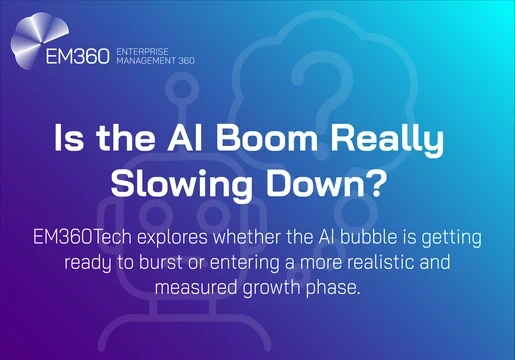For years, observability sat quietly in the background of enterprise technology, an operational tool for engineers, something to keep the lights on and costs down. As systems became more intelligent and automated, observability has stepped into a far more strategic role. It now acts as the connective tissue between business intent and technical execution, helping organizations understand not only what is happening inside their systems, but why it’s happening and what it means.
This shift forms the core of a recent Tech Transformed podcast episode between host Dana Gardner and Pejman Tabassomi, Field CTO for EMEA at Datadog. Together, they explore how observability has changed into what Tabassomi calls the “nervous system of AI”, a framework that allows enterprises to translate complexity into clarity and automation into measurable outcomes.
Building AI Literacy
AI models make decisions that can affect everything from customer experiences to financial forecasting. It's important to understand that without observability, those decisions remain obscure.
“Visibility into how models behave is crucial,” Tabassomi notes. True observability allows teams to see beyond outputs and into the reasoning of their systems, even if a model is drifting, automation is adapting effectively, and results align with strategic goals. This transparency builds trust. It also ensures accountability, giving organizations the confidence to scale AI responsibly without losing sight of the outcomes that matter most.
Observability
Observability is not merely about monitoring; it is about decision-making. It provides the insight required to manage complex systems, optimize outcomes, and act with agility. For organizations relying on AI and automation, observability becomes the differentiator between being merely efficient and achieving a sustainable competitive edge. In short, observability is no longer optional; it is central to translating technology into strategy and strategy into advantage.
For more insights visit datadoghq.com
Takeaways
- Observability has evolved from cost efficiency to a strategic role in AI.
- Integration with automation ensures explainable and predictable outcomes.
- Standards like OpenTelemetry unify observability efforts.
- Observability enhances security and governance in AI applications.
- Real-world examples show observability's impact on business processes.
- Strategic steps for leaders to leverage observability are provided.
- Observability provides visibility and governance for AI-driven businesses.
- Automation and observability integration are crucial for business success.
- Observability aids in enhancing security across AI applications.
Chapters
00:00:00 Introduction to Observability and AI
00:03:00 The Evolution of Observability
00:06:00 Observability as a Governance Tool
00:09:00 Automation and Observability
00:12:00 Standardization and Open Telemetry
00:15:00 Security and Observability
00:18:00 Practical Applications and Case Studies
00:21:00 Strategic Steps for Leaders
00:24:00 Conclusion and Future Outlook
About Datadog
Datadog is a SaaS platform that integrates and automates infrastructure monitoring, application performance monitoring, log management, real-user monitoring, and more—delivering unified, real-time observability and security across the entire technology stack. Used by organizations of all sizes and industries, Datadog enables digital transformation and cloud migration, fosters collaboration among development, operations, security, and business teams, accelerates time to market, reduces problem resolution time, and provides insight into user behavior and business performance.









Comments ( 1 )
Dana Gardner
15/11/2025